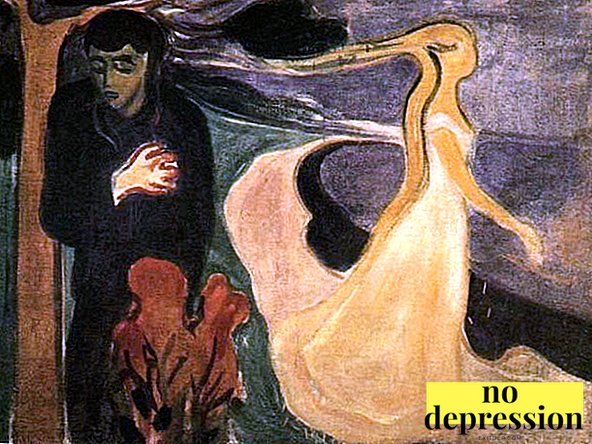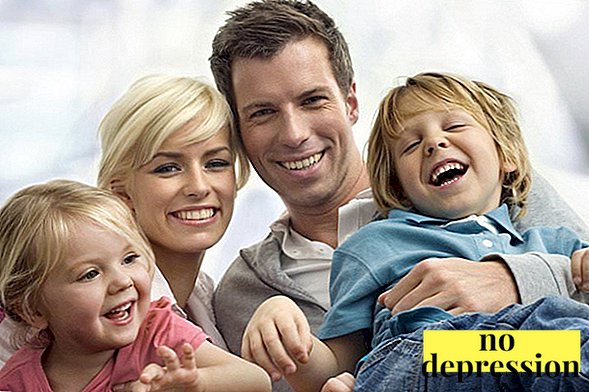Motivation plays an important role in human life.
It directly affects the level of activity, dedication and success of the individual.
Tamed this powerful "power" can significantly improve the quality of life. What does the word "motivation" mean?
What it is: definition of the term

What does motivation mean?
In terms of psychology motivation Called the sum of all internal and external incentives that induce a person to purposeful activity.
In psychology, the concept is considered as an incentive basis for the individual's mental life, a dynamic psycho-physiological process.
In simple terms, the term can be defined as a person’s ability to personal needs with the help of conscious activity.
By doing a deed or staying inactive, the individual invests in it a certain meaning, i.e. acts in this way because of something / for something. And this “something” is motivation.
Structure
The basis of motivation - its strong connection with human needs. A person seeks to reduce the tension that develops against the background of need. He also strives to cover various needs (of a social and biological nature).
The structure of the concept is presented in the form of a chain of related elements: need - motivation - action - goal.
It all starts with a feeling of discomfort experienced by a person as a result of a lack of something. From this feeling comes the motivation to act., and then the action that ultimately leads to the goal. As soon as one need closes, the next cycle begins.

Motivation cannot exist as an independent unit.
In order for a person to be motivated for certain actions, he has there must be an unmet need and end goal.
Stages of motivation:
- The occurrence of discomfort. A person understands that he lacks something for the organization of normal life.
- Search for options to get rid of discomfort (closing needs). A person is considering options for satisfaction, overwhelming control, replacement and switching to other needs. He seeks to get rid of the growing discomfort in the simplest and most justified way.
- Goal setting. A person must understand what means he uses and what result he will get.
- Active actions. A strong impulse and a need-oriented activity.
- Expected reward. Having achieved certain results, a person receives an award (in the form of satisfaction of need).
As an additional reward, he can receive positive emotions and the joy of fulfilling a dream.
- Closing needs. If a person has chosen the right behavior strategy and performed all the necessary actions, the need will disappear (forever or for a certain period of time).

Negatively affect the process.:
- a plurality of motives (a person experiences several needs at once and cannot identify the dominant one, as a result, it becomes very difficult to build a behavior strategy);
- a variety of motivational structures (their types) in humans.
Factors
There are three classes of motivating factors:
- needs and instincts;
- motives that determine the orientation of behavioral strategies;
- emotions and subjective experiences, as well as regulating the installation.
Classification, types and types
What is the motivation? Motivation has a complex hierarchical and typical structure. Various scientists at one time proposed different classifications. But today in psychology it is customary to single out the following types of motivation:
By source of exposure:
- internal (depends on the person himself and is attached to positive emotions that arise in the process of action);
- external (not tied to the content of the activity, and arises on the basis of incentives coming from outside).

Intrinsic and extrinsic motivation works best in the aggregate, allowing a person to effectively and quickly close needs, even if barriers are present.
By emotional coloring of the stimulus:
- positive or positive motivation (tied to positive emotions that will result from achieving the goal);
- negative or negative motivation (tied to the avoidance of negative emotions that are the potential result of any activity or inaction);
According to the degree of stability:
- steady (present in human life on an ongoing basis, as it is based on natural needs, hunger, thirst, etc.);
- unstable (requires constant support and easily quenched without external stimulus).
Type of motivation for the orientation of the stimulus:
- individual (aimed at ensuring the self-regulation of the body);
- group (the desire to protect offspring, deserve a place in society, to preserve the social structure, etc.);
- cognitive (game type of activity).
Levels

In addition, there are levels that reflect a person's desire to close their needs or suppress them.
A decade ago the scale began at level threewhich was the most "serene" and "non-initiative."
The person of the third level simply adapted to the environment, not trying to change the situation and achieve the goal.
Highest ninth level It is associated with sacrifice and an urgent need to stay in the “victory zone”. People of the ninth and approximate levels prefer to satisfy, rather than suppress their desires.
Less than 10 years ago, the first and second levels were added to the scale. These levels reflect the inability to meet their own needs.
Those. a person who is at level 1 or 2 lives in a zone of poverty and debt, as his volitional impulse is too weak to leave the comfort zone.
Basic theories briefly
Theories are built on the analysis of factors influencing the process of motivation. Main task theory is the analysis and reflection of human needs, their structure and content.
Psychological

Motivational psychological theory emerged in the 17-18 centuries.
They were built on the ideas of rationalism. Man was considered to be a creature different from animals and endowed with the highest gifts (self-consciousness, mind, etc.)
So theory of solutions and automaton explains human behavior and animal behavior on a rationalistic and irrationalistic basis, respectively.
In the second half of the 19th century, the theory of motivation was revised thanks to C. Darwin, offered the world the theory of evolution. Now the concept was connected with instincts, and the needs were divided into two groups (social and biological).
Further, biologist W. McDougall and Freud leveled all behavioral strategies to innate instincts. Freud singled out only one instinct (libido), and then added the death instinct.
And McDougall proposed a list of 10 instincts (construction, flight, reproduction, curiosity, etc.).
Kurt levin considered motivation as a set of valence units, by analogy with chemistry. Mr. Murray divided needs into primary and secondary. A. Maslow He derived the most popular concept, according to which needs have a hierarchical division.
At the lowest (basic) level are organic (natural) needs. Next come the needs for security, affiliation, cognition, aesthetics and self-actualization. Their satisfaction occurs by shifting the focus from the lowest level to the highest level.
Cognitive

Cognitive theories rate motivation as mechanism of choosing one or another form of behavior.
And this process regulates mental activity.
S. Bolles considered the selection mechanism as a response to an external stimulus in case of urgent need and the choice of possibility according to a random algorithm at any other time.
Edward L. Deci believed that intrinsic motivation is a kind of "prescribed code" in the body, since it depends on the innate characteristics of the individual.
Lyon Festinger He proposed the “Theory of Cognitive Dissonance”, according to which any knowledge or belief can be considered cognition.
And in a collision of mutually exclusive cognitions, a person experiences a feeling of discomfort and seeks to get rid of him, motivating himself to act.
Taylor
Taylor first applied substantive approach To a question.
The essence of the theory is that a person will be most motivated if his reward is directly related to the level of labor productivity.
He introduced two new elements that were supposed to stimulate workers: premium payment system and chronometer.
Domestic

The authors of the most successful domestic theories were L.S. Vygotsky, A.N. Leontyev, B.F. Lomov.
They focused on teaching, while lowering motivation in the framework of production and labor sphere.
According to the theory profitable man has two polar levels of development (higher and lower). These levels develop independently of each other, but simultaneously.
They determine the higher and lower needs of the individual. Close the needs of one level with the help of funds from another level is impossible.
Leontiev
Leontiev in his writings wrote that the prerequisite for any action is subject.
At the same time, the presence of need is a fundamental condition of life for a person, as is the ability to breathe.
Need more generally, it is a need for something that lies outside the body. Those. the desire to supplement the system.
Diagnostics
Through multiple experiments, it was found that there is an optimal level of motivation. And the diagnostics of this sphere allows to reveal how much does the real level correspond to the optimal.
For the diagnosis used special techniques:
- thematic Apperception Test (TAT);
- Heckhausen motivation test;
- color metaphor technique;
- technique of repertory grids;
- questionnaire of need for achievements (Yu. Orlov).

In addition, they actively apply interview methodwhen data is collected through personal contact between the specialist and the subject.
The problem of motivation in psychology
A person may or may not be aware of his motives. And if he is not aware of where the motivations for this or that action come from, control actions and emotions will be very difficult.
The question of motivation is raised every time when it is necessary to determine the cause of certain actions of the individual.
Therefore, the task of psychology is to explain how the motivational sphere is formed, what methods can be used to influence it, how to control current processes related to this sphere.
Motivation helps a person to survive and develop, overcoming difficulties and maintaining the smooth operation of the body.
And if the basic incentives motivate a person to get bread and water, then social helps to build contacts, achieve success and gain recognition. In this way, motivation affects all areas of life.
Motivation: concept, theory, types and process:



